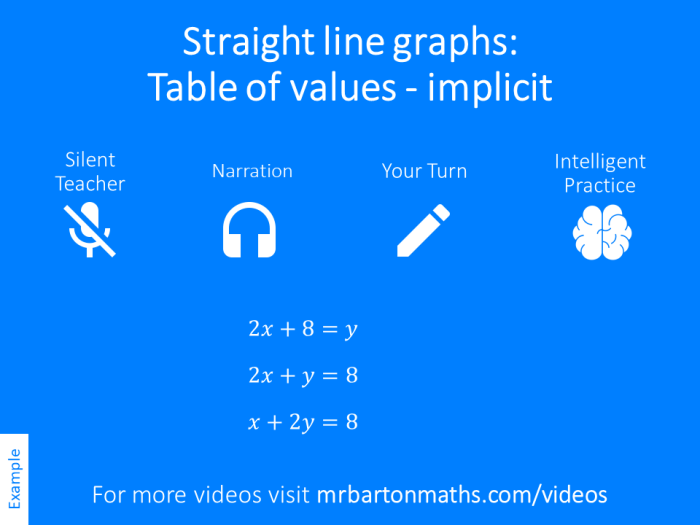Graphs of the following are straight lines except: this phrase introduces a nuanced concept in mathematics, where certain equations produce graphs that deviate from the familiar linear pattern. This exploration delves into the exceptions to straight line graphs, examining functions that yield non-linear curves and the reasons behind their unique behavior.
Moving beyond the realm of straight lines, we encounter a diverse array of functions that produce graphs with distinct shapes and characteristics. These non-linear graphs hold valuable insights into real-world phenomena, offering a deeper understanding of complex systems and processes.
Identify Equations of Straight Lines: Graphs Of The Following Are Straight Lines Except

Straight lines are graphs that can be represented by linear equations, which are equations of the form y = mx + b, where m is the slope of the line and b is the y-intercept. The slope represents the steepness of the line, and the y-intercept represents the point where the line crosses the y-axis.
Exceptions to Straight Line Graphs
Not all graphs are straight lines. Some functions, such as polynomials of degree greater than 1, produce graphs that are not straight lines. These graphs are called non-linear graphs.
Examples of Functions with Non-Linear Graphs
- Quadratic functions (y = ax^2 + bx + c)
- Cubic functions (y = ax^3 + bx^2 + cx + d)
- Exponential functions (y = a^x)
- Logarithmic functions (y = log ax)
Visualizing Non-Linear Graphs
Non-linear graphs can be plotted using a graphing calculator or software. These graphs can be used to visualize the relationship between the independent and dependent variables.
Applications of Non-Linear Functions, Graphs of the following are straight lines except
Non-linear functions are used in a variety of real-world applications, such as:
- Modeling population growth
- Predicting the spread of disease
- Analyzing financial data
Quick FAQs
What is meant by “graphs of the following are straight lines except”?
This phrase refers to the concept that certain functions produce graphs that deviate from the typical linear pattern, exhibiting non-linear curves.
Why do some functions produce non-linear graphs?
Non-linear graphs arise when the relationship between the variables in an equation is not linear, resulting in curves that exhibit varying slopes and shapes.
How can we identify non-linear graphs from their equations?
By examining the equation of a function, we can determine whether it will produce a straight line graph or a non-linear graph. Non-linear equations typically involve terms with exponents, radicals, or trigonometric functions.

